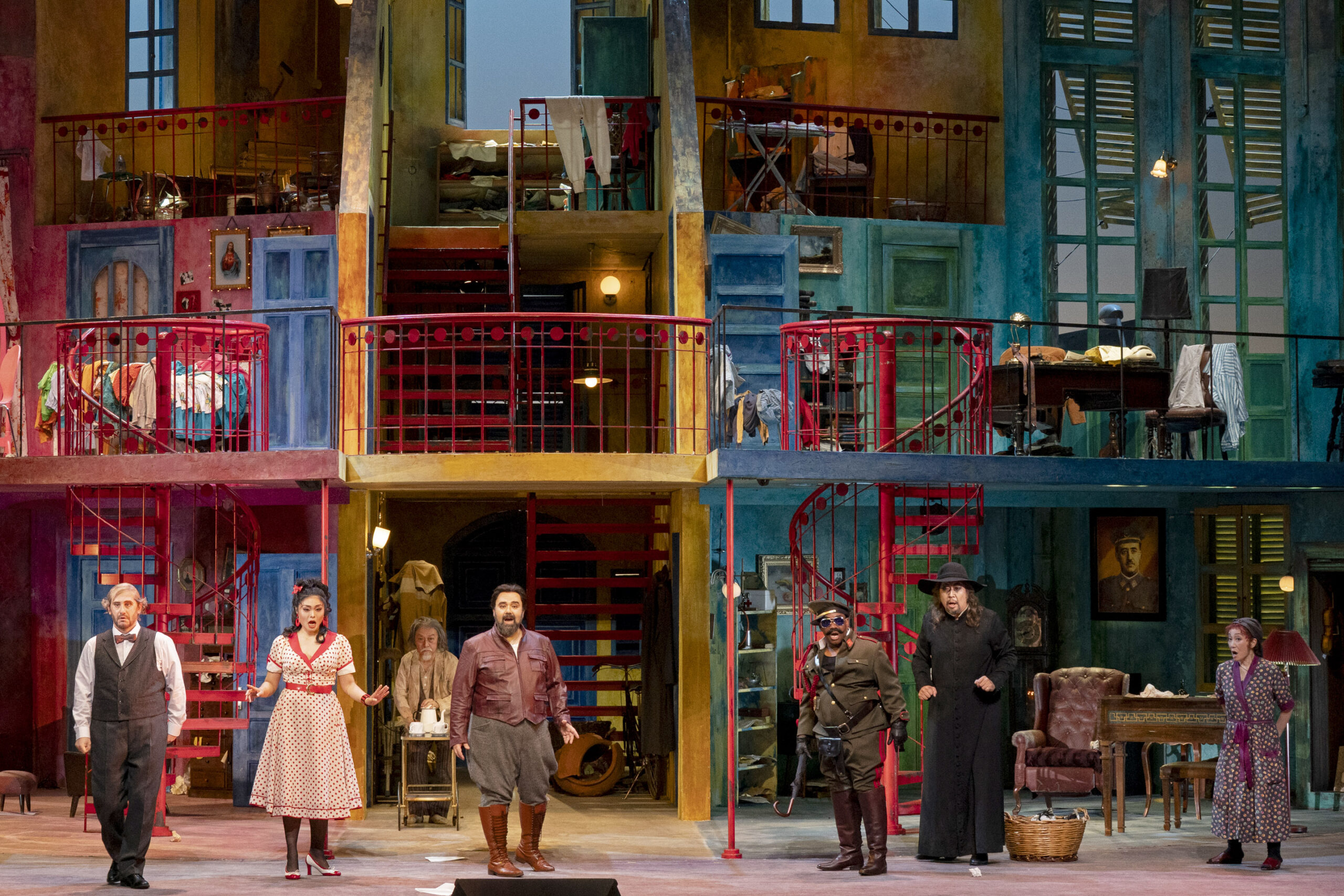Josef E. Köpplinger’s lively and imaginative production of Rossini’s Il Barbiere di Siviglia returns to the New National Theatre Tokyo after a five-year absence. This opera buffa masterpiece—long admired by both Schumann and Verdi—retains all its charm, wit and musical brilliance, now reimagined with the colourful flair of the 1960s.
The plot follows the classic tale of the clever barber Figaro, who helps Count Almaviva win the heart of the beautiful and spirited Rosina. Her greedy guardian, Dr Bartolo, hopes to marry her himself and keeps her closely guarded. Through disguises, trickery and quick-witted schemes, the lovers outsmart Bartolo, and love ultimately triumphs.
From the outset, the audience is transported into the colourful city of Seville. The rotating set bursts with vivid colours and visual energy, perfectly capturing the town’s bustling character. Each main character is given a modern twist to match the 60s setting, which adds fresh energy to the familiar story: Rosina is a strong-willed young woman who practises kick-boxing; Figaro is accompanied by a band of local children; Count Almaviva is portrayed with a touch more drunken swagger than usual, and Bartolo is depicted as a sleazy figure forcing his housekeeper Berta to run a brothel on the side.
What makes this production particularly engaging is the ensemble’s balance. No single character overshadows the others, and the production cleverly shifts the spotlight from one to the other, maintaining a lively rhythm that keeps the audience thoroughly entertained.
Amongst the strong cast, Lawrence Brownlee shines as Count Almaviva. His voice was both rich and agile, expressing emotion with nuance and verve that touched the audience’s hearts. Aya Wakizono’s Rosina was equally impressive, commanding attention every time she appeared on stage. Her rendition of “Una voce poco fa” was powerful yet playful, and “Contro un cor che accende amore” revealed both her vocal strength and dramatic flair. Roberto de Candia gave a confident performance as Figaro, and Giulio Mastrototaro’s Bartolo added just the right measure of buffoonery. Etsuko Kanoh’s Berta deserves special mention—her aria “Il vecchiotto cerca moglie” received great applause.
Köpplinger’s decision to relocate the action to Franco-era Spain in the 1960s feels appropriate, since Francoist Spain was a time of repression and underlying social tension—a setting that echoes the revolutionary spirit of Beaumarchais’ late 18th century milieu. This parallel allows for the heart of the original story to live on, whilst also injecting the opera with flair and colour.
Heidrun Schmelzer’s costume and set design help evoke the 60s setting and gives a visual delight. Rosina’s costumes, in particular, capture her rebellious nature and youthful romanticism with bold colours and feminine silhouette. Lighting designer Maki Yagi further enhances the mood, painting the Seville skyline in tones of pink dusk, sunny blue, and stormy black, conjuring the warmth and drama of southern Spain.
Under the baton of Corrado Rovaris, the orchestra played Rossini’s dazzling score with clarity and energy. His conducting was refined and assured, drawing out the opera’s playful rhythms and lyrical beauty to great effect.
This revival received a well-earned enthusiastic response from the audience. With a superb cast, inventive direction, and infectious energy, this Barbiere proves not only timeless, but refreshingly reimagined and worth a second watch.
Type: Opera
Title: Il Barbiere di Siviglia ****
Venue: New National Theatre Tokyo
Composer: Gioachino Rossini (1792-1868)
Libretto: Casare Sterbini
Director: Josef E. Köpplinger
Conductor: Corrado Rovaris
Set and Costume designer: Heidrun Schmelzer
Lighting designer: Maki Yagi
Cast includes Lawrence Brownlee, Aya Wakizono, Roberto de Candia, Giulio Mastrototaro
Until 3rd June 2025
Photograph: ©Rikimaru Hotta/New National Theatre, Tokyo
Running Time: 3 hours 05 min (including 1 interval)
Review by Miho Uchida
26th May 2025

